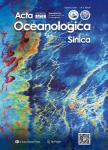Patterns of gas hydrate accumulation in mass transport deposits related to canyon activity: Example from Shenhu drilling area in the South China Sea
Patterns of gas hydrate accumulation in mass transport deposits related to canyon activity: Example from Shenhu drilling area in the South China Sea作者机构:School of Energy Resources China University of Geosciences Guangzhou Marine Geological SurveyChina Geological Survey
出 版 物:《Acta Oceanologica Sinica》 (海洋学报(英文版))
年 卷 期:2019年第38卷第5期
页 面:118-128页
核心收录:
学科分类:0710[理学-生物学] 0908[农学-水产] 07[理学] 0707[理学-海洋科学]
主 题:South China Sea gas hydrate sedimentary characteristics MTDs hydrate responding pattern
摘 要:Since 2017, a plenty of gas hydrates have been drilled in a new area of Shenhu, and good heterogeneity has been found throughout the spatial distribution of the reservoir. After distinguishing different sedimentary sequence types and matching their formation with slope deposition settings, this study proposes three mass transport deposit(MTD) patterns related to canyon activity that occurred contemporaneously or epigenetically with it: well preserved MTDs, MTDs eroded by canyon migration, and MTDs dislocated by contemporaneous faults. Based on seismic reflection characteristics, this study proposed methods of quantitatively analyzing sedimentary factors,such as measuring the turbidities flow rate in the canyon, and results are interpreted with respect to canyon activity. Combining the above parameters and their relationship with gas hydrate accumulation, fine-grained seals overlapping coarse MTDs reservoirs are found to be indispensable to gas hydrate accumulation, as they prevent the release of free gas. Based on grain size data of hydrate samples from drilling wells, multi-layered gas hydrate reservoirs capped by fine-grained sediments and overlapping mud show favorable hydrate-bearing prospects. The release of gas hydrates, however, is mostly caused by the lack of mud sealing in relation to canyon activity, such as turbidities flow erosion and contemporaneous fault breaking. Canyon migration with respect to MTDs may be the actual cause of erosion of overlapping syn-sedimentary layers, and high bottom flows may contribute to an increase in the release of free gas. It is believed that contemporaneous faults caused by unstable canyon walls may break the muddy over layers and decrease the accumulation pressure of gas hydrate ***, according to the sedimentary characteristics of MTDs and the hydrate accumulation process, three responding accumulation or releasing patterns are proposed, which respond to the different types of MTDs distinguished above: a well-pr



